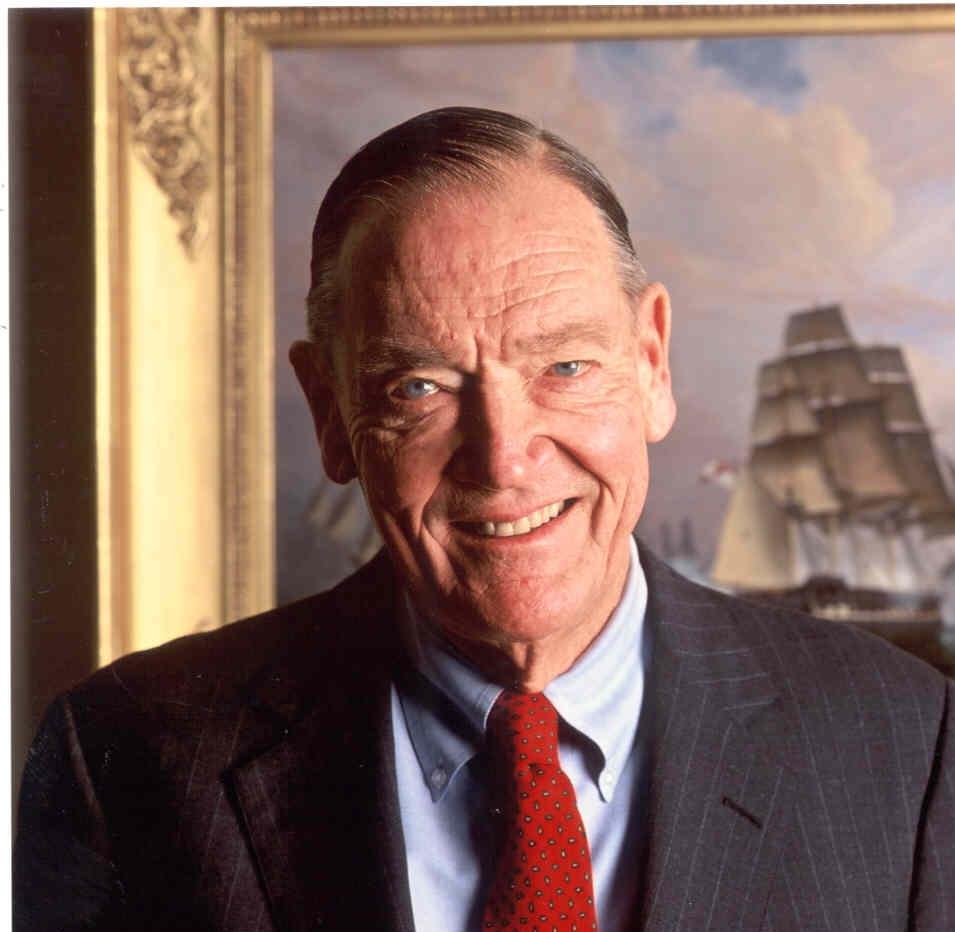by Rick Ferri
John C. Bogle was hired by Wellington Management Company in 1951 immediately following his graduation from Princeton. Hard-driving Bogle became President of the company in 1967, the fund company’s CEO in 1970, and was subsequently fired in 1974 for a bad decision. With Mr. Bogle’s permission, this article documents new information about his early career and about the fund industry during that time.
Wellington was an active fund company and remains so today. Through subjective securities selection, the firm attempts to outperform the markets nominally or on a risk-adjusted basis. Bogle was wed to this strategy during his 23-year tenure at the firm.
In 1960, the Financial Analyst Journal (FAJ) published an article written by John B. Armstrong, a.k.a. John C. Bogle. The award-winning article lauded the benefits of actively managed mutual funds and rejected the notion that an unmanaged portfolio of 30 Dow Jones industrial average stocks was a better alternative. He wrote this article under a pen name because he didn’t want to create a compliance issue for Wellington.
Bogle’s article rebutted an earlier FAJ article by two University of Chicago students. They suggested that a low-cost “unmanaged investment company” of the Dow 30 would be a better choice for investors rather than trying to select from over 250 actively managed funds available at the time. Bogle provided a compelling argument backed by mutual fund return data to prove his case for active management. The effort led to an Honorable Mention for excellence in investment research from the Graham and Dodd Awards.
Wellington became a publicly traded company in 1960, and like all public firms, growing profits became the primary focus. The Go-Go era of aggressive growth stocks began soon thereafter. That was not Wellington’s forte. Bogle took the lead to push Wellington into “performance funds” in 1966 by forging a merger with a Go-Go fund management group based in Boston.
The merger worked well for a while, but ended badly. Wellington was crushed when the Go-Go era ended and aggressive growth stocks collapsed. Bogle was fired as CEO in 1974 by the Wellington Board of Directors, but he was allowed to form Vanguard to do administrative work for the funds. This is when he revisited the idea of passive investing, which ultimately reversed his long-held view of active management, and changed Vanguard’s destiny.
I wrote about John Bogle’s epiphany in a recent article and had an email exchange with Mr. Bogle about the piece. He shared little-known information with me about his early thinking and sent me recent correspondence about the period that he had written. I asked for, and was granted permission, to publish his correspondence.
In November 2013, Mr. Bogle received a letter from a person (that will remain anonymous) who had a deep interest in his 1960 FAJ article. This person was well informed of the events leading up to the article, and for prosperity purposes, he wanted to know if Mr. Bogle would answer a few of his lingering questions. Bogle eloquently answered the person’s inquiry.
Jack isn’t one to hide from his mistakes. When I asked for permission to write about the correspondence, he said, “I love to acknowledge my many mistakes and failings…I actually find it liberating.”
I have assembled a question-and-answer format from that written correspondence. The content that follows is little changed from its original state. Only minor redundancies were removed as well as references to names and associations.
QUESTION: First, based on a sample size of two, it seems as though the difference between successful and unsuccessful early “index” funds was cap-weighting. The unsuccessful ones did not use cap-weighting (Wells Fargo Bank in 1971). The successful ones (Vanguard 500 in 1975 and the “revised” Wells Fargo Bank [fund] in 1976) used cap-weighting. Looking back at this today, it seems as though the merits of cap-weighting were not so obvious in the 1960s and 1970s as they are today. I am curious if you agree, and if so, how do you think the recognition of the importance of cap-weighting has evolved since then?
BOGLE: You’re right. Crazy as it sounds, that idea was not much explored in the early 1970s. But it clearly made sense: “the market,” after all, is the value of the entire stock market (and the S&P 500 represents about 83 percent of it). Even better, the 500 is easy to replicate, and rarely are there significant changes in its composition.
QUESTION: In your FAJ article [from 1960], you quote the American Institute for Economic Research’s reasoning for why fixed and semi-fixed trusts did not succeed (which I guess at the time of your article you somewhat agreed with):
“The relative inflexibility of these funds makes them undesirable for the average investor, who usually has neither the time nor the ability to analyze the portfolio’s securities and ascertain their suitability for his needs…”
I understand the second half of the quote…In fact, that particular problem – the large number of different investment opportunities in the real world and the impossibility of the average investor being able to decide among them – were the problem in the first two paragraphs of the [earlier FAJ paper that prompted your rebuttal].
BOGLE: [Concerning] fixed and semi-fixed trusts, my recollection is that, during the late 1920s and early 1930s, there was a wide variety of these portfolios, making choice difficult and risky. What’s more, most were closed-end funds, often heavily leveraged. For a horrible example, check out the disaster of Goldman Sachs Trading Corporation. Also read Chapter XXVII of the 1934 edition (it vanished in later editions) of Security Analysis, by Graham and Dodd, summarized in appendix II in the 10th Anniversary Edition of my book, Common Sense on Mutual Funds. (Don’t miss page 606.)
QUESTION: But, reading between the lines of your 1960 article, it almost seems as though the only “rational” way to invest in the stock market in the 1960s was to rely on the expertise of experienced professional managers. The thought that there might be a way to invest in the market that was simultaneously rational and simple enough not to require (expensive) expertise was essentially unimaginable or, if imaginable, was extremely unlikely. As you point out in the article, setting aside whether or not active managers actually beat the market, the implementation costs of an index fund are non-zero, and at that time, you estimated that they might be larger than the costs of an expert money manager. It’s almost as if you were thinking if it were really that “easy,” why hasn’t anyone done it?
BOGLE: [Concerning] the only “rational” way to invest in the stock market. In 1960, the mutual fund was, as you suggest, the only rational way to do so. Then, however, funds were more or less commodities (with a few exceptions), (a) holding diversified portfolios of “blue chip” stocks; (b) mostly maintaining volatility in the range of 0.90 to 1.00 to the S&P; (c) having moderate portfolio turnover (maybe 25-30 percent?); and (d) carrying low expense ratios (averaging 0.62 percent compared to 1.15 percent in 2012). How different from today’s industry! (See page 106 of my Clash of the Cultures, and Chapter 11 of Don’t Count on It!.)
QUESTION: By 1975, you obviously convinced yourself that the costs of an index fund would be less than the costs of expert advice (but not expert implementation!). I would be interested in your recollection of how you changed your mind between 1960 and 1975. Did the market change? Did costs go down? Did you try it?
BOGLE: Why did I change my mind? On the rational front, I’ve often defended my change in view from my 1960 FAJ article with this idea: In 1960, we compared a bad index (DJIA) with a good industry—see (a) to (d) above. In 1974, I compared a good index (S&P) with a bad industry, as those four factors all took a turn for the worse. Especially in the tragic-comedy of the “Go-Go era” of mutual funds (1965-1969), many fund investors were badly hurt. We learned much from that drastic breach of trust. So as the facts changed, of course my opinion changed!
What’s more, as I’ve frequently acknowledged, I recognized that if the newly created (1974) Vanguard were to have even a fighting chance at success, we’d have to get into the arena of investment management. But we were limited by our charter, as it were, to providing only administrative services to the funds. So I gambled that the obvious negative reaction of the Board to our providing investment services to our funds could only be overcome by offering a fund that required, well, no management!
When I proposed that we offer the first index mutual fund, I assured the board of directors that “this fund is not managed.” And they (reluctantly) accepted my recommendation. On such twists of fate do most sagas depend (though few innovators have the guts to admit it, let alone brag about it).
Further, the creation of that first index mutual fund was inextricably linked to the creation of our unique, truly mutual, low-cost structure for Vanguard. In an index fund, low costs are the only factor that substantially differentiates one all-market index fund from another. So we had, in essence, a “lock” on winning the game. While every fund firm had the opportunity to create the first index fund, only Vanguard had the motive.
So, there’s the hard stuff on which you focus in your questions, but there’s also the soft stuff that explains, well, my change of heart. (Yes, a metaphor, but also an acknowledgement that I’ve now been living with a transplanted heart for 17 years and 11 months.) Never underrate the soft stuff—the certainty of the math, the contrarianism, the missionary zeal, and the confidence that, in this case (almost alone), the past is indeed prologue: Gross return in the stock market, less the cost of playing the game, equals the net return earned by investors as a group. Past. Present. Future.
Copyright © Rick Ferri














